When it comes to livestock, the difference between most male and female birds and animals is quite obvious. The difference is not as obvious in others and may require extensive tests.
Turkeys fall in between and can be a challenge to sex without any experience. However, with a few tricks up your sleeve, differentiating toms from hens will not be as difficult.
Read on to learn more about the tricks of this trade.
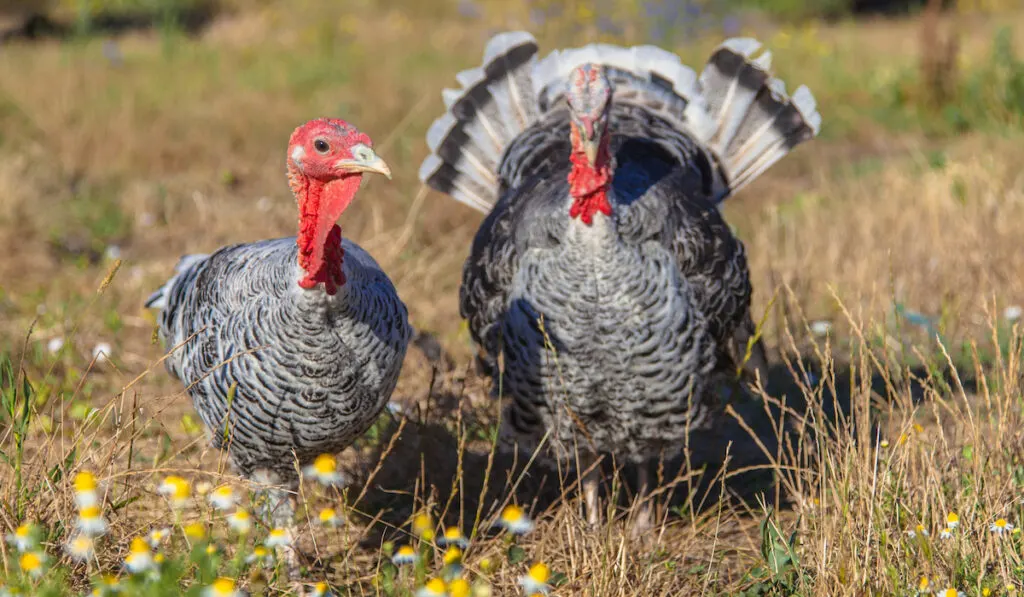
Table of Contents
Physical Characteristics of Male and Female Turkeys
Differences in Size and Weight
At first glance, wild and domestic adult toms are bigger than their female counterparts.
This size difference may be obvious shortly or a few weeks after hatching, but it is especially evident when you compare the two side by side.
Besides their heights, the weight difference is another way to tell the difference between toms and hens.
Toms weigh 11 to 24 pounds while hens run between 5 and 12 pounds.
The weight difference does not necessarily come from feeding but from the mere fact that toms have a larger physique than hens.
Domesticated toms can get to a height of 4 feet, and hens, 3 feet.
Their wild counterparts can get to heights of 5 feet for the toms and 3 feet for the hens.
Keep in mind that both wild and domesticated turkeys have a wingspan of 4 to 5 feet.
Coloration and Feather Patterns
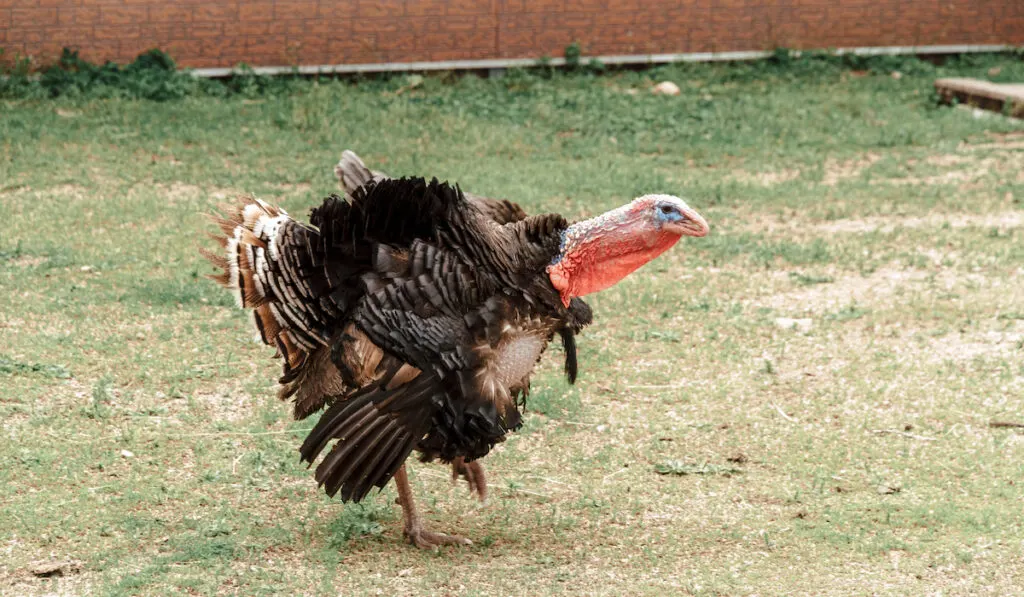
Another trick to differentiate toms from hens is by examining their coloration and feather patterns.
Adult wild toms have notably dark feathers that have a metallic sheen, especially on the chest.
Wild hens have light-colored feathers that are usually bronze or brown.
Similarly, the plumage of domesticated toms is shinier than that of domesticated hens.
As far as feather patterns go, you will notice that the tips of female turkeys are buff-colored, while those on toms are black with a metallic sheen.
You can also tell toms and hens apart by their tail feathers.
Toms have impressive and conspicuous tails, while hen tails are quite short.
Besides sexing, you can use feather patterns on both toms and hens to determine their age.
For instance, the two outermost feathers on the primary wings of toms have rounded tips, with the white tips extending to the end. The same feathers on juvenile tomes have sharper tips without any white markings.
The tail feathers on adult hens have a perfectly rounded look, thanks to their equal length.
Juvenile hens have uneven tails since some feathers are longer than others.
Another distinguishing feature between toms and hens is the beard that grows out of the chest.
While hens can also grow a beard, it does not grow as long as in their male counterparts.
Besides separating the males from the females, the length of the beard also helps separate adults from juveniles.
That is, adult hens and toms have beards that are 6 inches or longer, while juveniles’ beards are less than 6 inches.
For your harvest report, only measure the longest beard if your turkey has two beards. Also, only go for the longest filaments within a beard when measuring its length.
Differences in Head and Facial Features

Facial features are another surefire way to differentiate toms from hens.
For instance, it is easy to notice that wild toms have heads that are a blend of white, blue, and red coloring.
Their female counterparts have dominantly blue or blue-gray heads that rarely have any red coloring.
Domesticated toms have coarse, fat heads, while female turkeys have a much slender, smoother head.
Hens also have feathers on their heads, whereas the toms are mostly bald.
Probably the most noticeable, distinguishable feature in turkeys is the snood — the skin flap overhanging the turkeys’ beaks.
While both toms and hens have snoods, the ones on the toms can elongate or shrink to attract females or during episodes of anger.
When elongated, the snood is bright red and can be between 3 and 5 inches.
Paying attention to caruncles and wattles is another surefire way to distinguish adult toms and hens.
But what are wattles and caruncles?
Wattles are skin flaps that grow under turkey beaks. Caruncles are growths or bumps along a turkey’s neck and head.
Both caruncles and wattles can grow to large sizes and turn bright red alongside the snood when the tom is angry, fighting, or attracting females.
That being said, turkey hens have fewer bumps. What’s more, the face of a female does not turn red and neither does her snood, wattle, and caruncles.
Differences in Legs and their Features
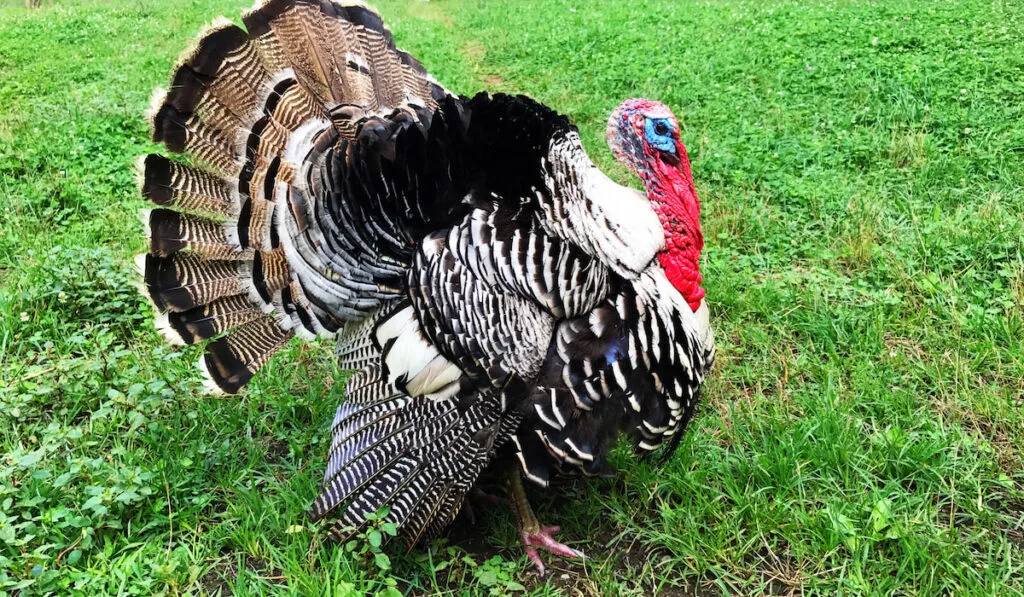
I bet you didn’t guess that you tell the sex or gender of a turkey by looking at its legs only.
As we have already established, turkey hens are significantly smaller than toms. As such, hens have smaller legs than the toms.
On average, adult toms have 15-centimeter-long legs (6 inches), while adult hens have legs averaging 11 centimeters (4.5 inches).
Toms have a sharp spur on their legs, while hens do not.
The spurs on adult males can grow to half an inch long, while those on juvenile toms are usually less than half an inch long.
Though spur length is a straightforward way of identifying toms, the spurs may appear too late and after the bird’s sex is already evident through other ways.
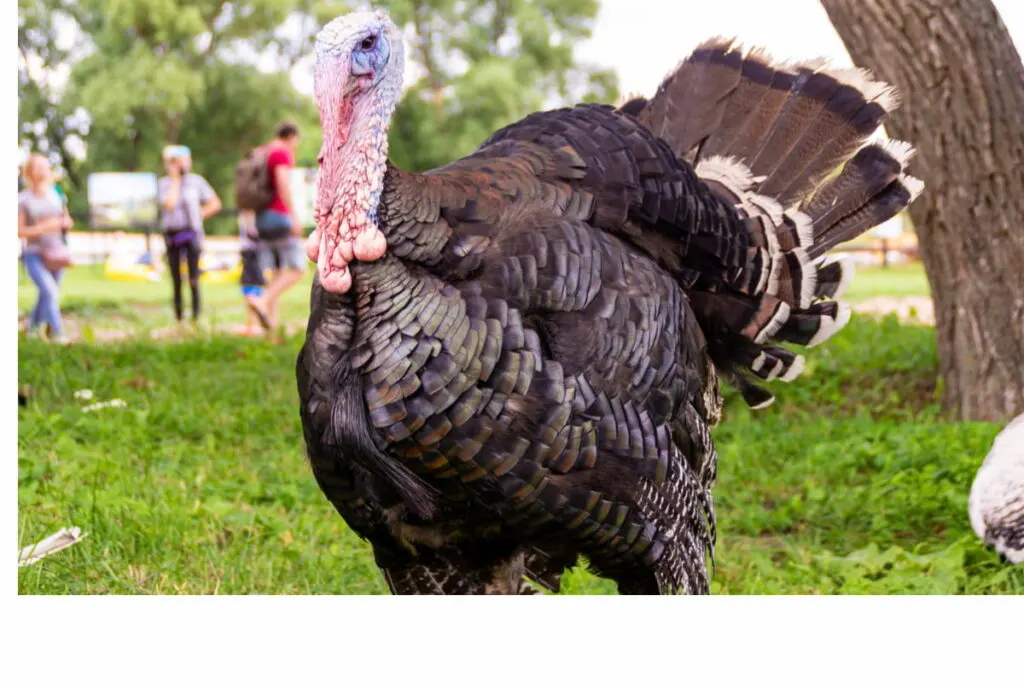
Vocalizations and Behavior of Male and Female Turkeys
Gobbling and Strutting Behaviors of Male Turkeys
In addition to their physical markers, turkeys also have vocalizations and behavior that you can use to differentiate toms from hens.
One such vocalization is the gobble.
The turkey gobble is comparable to a rooster’s call. It is performed by toms and rarely by hens.
The turkey gobble is not viable for sexing adult turkeys. This is because the gobble, like the spurs, develops later in a tom’s life when you may already know your turkey’s gender by other signs.
That being said, paying attention to the turkey gobble can be helpful when you are trying to identify the gender of juvenile turkeys that haven’t started showing other markers.
Another thing you can use to sex your flock is their strutting behavior.
The display or strut is a classic turkey show where the toms fan out their tails and slightly drop their wings to flaunt their shiny feathers.
While strutting is mostly associated with toms communicating their status or reproduction-pairing availability, it is a somewhat confusing marker because turkey hens can also perform the strut for almost the same reason.
In hens, displaying can be a response to strutting toms or a way to assert dominance or alpha status among other hens.
In other cases, strutting is a form of greeting among hens after meeting for the first time with their newly hatched turkey babies.
Lastly, the hen may also strut before strange individuals to show their superiority in their flock’s social order. With this in mind, tom and hen displays are different and are quite easy to differentiate.
The main difference is that a male turkey’s strut is accompanied by an elongated snood and a thumping sound from its chest, which swoons the hens that are ready for breeding.
Differences in Social Interactions Between Males and Females
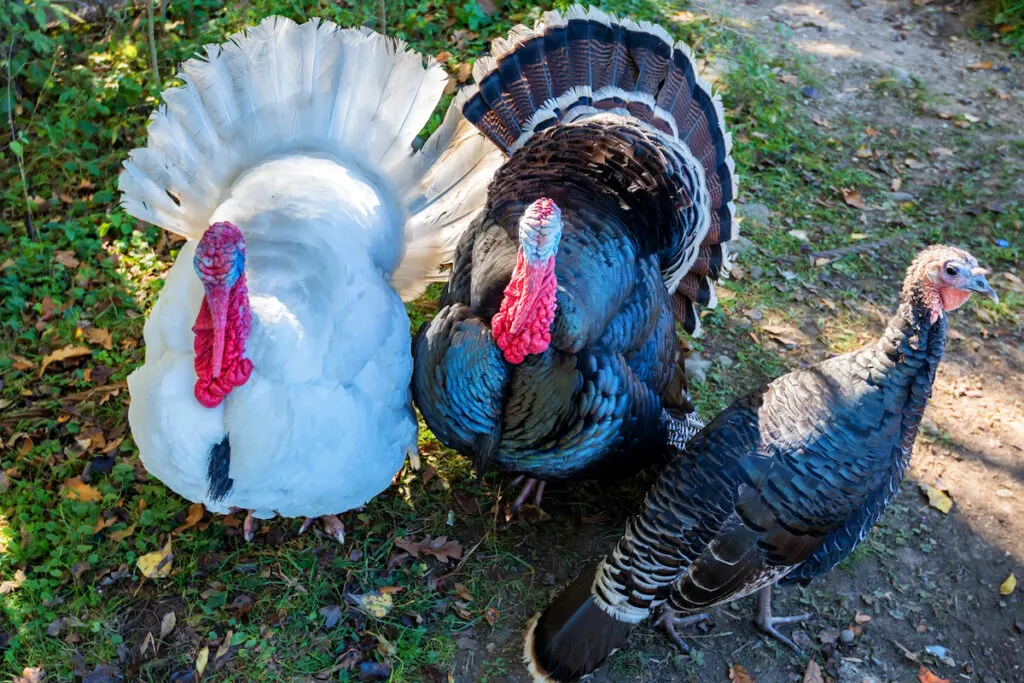
Social behavior is another smart way to tell male and female turkeys apart, especially poults.
Generally, male poults or baby toms are usually more aggressive toward other birds in the flock. This continues even as they grow older.
Some of the common aggressive behavior includes fighting and pecking.
Another behavior that is associated with male poult is leg tucking. You can examine this by lifting newly hatched turkeys and looking for any signs of tucked or pulled-up legs.
Dangling feet, however, are a great pointer to female turkeys, while tucked legs represent baby toms.
Final Thoughts
Whether you want to add turkeys to your flock or start hunting them as a hobby, knowing the difference between males and females is crucial to your success.
Luckily, this is now easier for you thanks to the information herein. The last thing you want is to end up with too many toms in a domestic flock or face fines for hunting the wrong bird.
Resources:
- https://meyerhatchery.zendesk.com/hc/en-us/articles/360013483652-How-do-you-determine-the-gender-of-your-turkeys-
- https://petkeen.com/male-vs-female-turkeys/
- https://struttingtom.com/turkey-hen-vs-tom-how-to-tell-the-difference/
- https://a-z-animals.com/blog/male-vs-female-turkeys/
- https://dep.nj.gov/wp-content/uploads/njfw/turkey-sexing-aging-measuring.pdf
- https://www.wikihow.com/Sex-Turkeys
- https://www.petturkeys.com/Tom-turkeys.html
- https://sciencing.com/tell-between-male-female-turkeys-5810985.html
